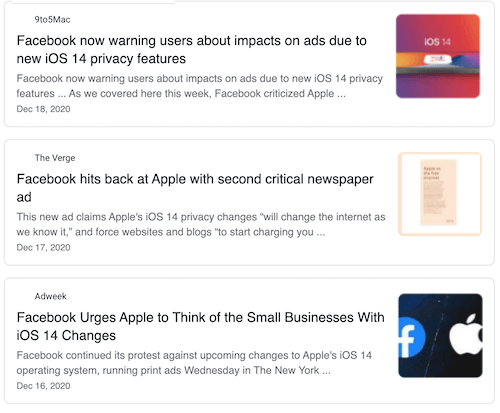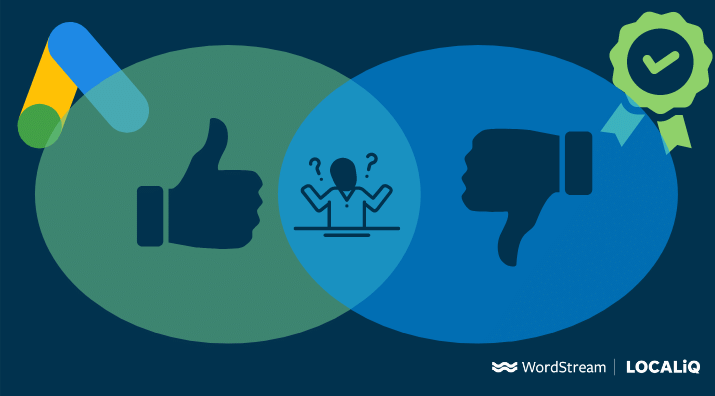Experimental Design – Experimental Campaign Design is a method to ensure that variables like creative, bid, channel, time of day, etc are properly controlled to determine a lift measurement and determine the value of a particular paid marketing channel, tactic, or creative. This can be done in a number of ways, the most common being:
“Yesterday’s playbook just got burned. Privacy lit the match. And while the future is uncertain, we can prepare by investing in durable measurement solutions like experimental campaign design, media mix modeling, and reach, frequency, and monetary segmentation to better understand marketing efforts. If that sounds like a hefty price tag, you’re right, it’s going to cost a lot of money NOT to invest in a solid measurement framework in the privacy-by-default world.”
If you’re interested in adding unified measurement solutions into your toolkit, consider exploring or implementing the following models and experiments as they are durable solutions for an uncertain future. Yes, marketing science can be an investment for your business or brand, but what’s the cost of doing nothing? By embracing a unified measurement framework, you can actually save money in the long run and further optimize your campaigns for better efficiencies and ROI. When you have access to more information, you can inform your overall strategy and adapt campaigns for enhanced results.
– Liz Emery, VP, Mobile + Ad Tech at Tinuiti
In this article, we’ll take a deeper look at why you need to invest in marketing science today. We’ll also explore modeling options you’ll want to consider and we will break down what data you need to get started with unified measurement. Let’s dive in.
What is Unified Measurement?
When it comes to IDFA specifically, Apple has taken the strategic stance that privacy is a user right and they are currently taking steps to grant users more ability to opt-out of any type of targeting or tracking. On the cookie front, users have the ability to block various tracking technologies or request the deletion of their data. While Google reports that they will delay the discontinuation of third-party cookies until the end of 2023, the change is undoubtedly coming.
It’s also important to recognize that we haven’t always had access to this kind of data and this isn’t the first time marketers have experienced signal loss…
Why You Need to Invest in Marketing Science
Platform models should definitely be seen as a resource, but they aren’t always showing the full picture and you shouldn’t depend on them alone. For example, platform-specific models may over credit themselves (ie: grading their own homework) and they simply can’t see everything when it comes to attribution.
You Can’t Rely on Platform Models Alone
But how can you access and analyze this data? The answer: Marketing Science.
Give Credit where Credit is Due
– Nirish Parsad, Practice Lead for Future of the Web at Tinuiti
Marketing Science Helps Close the Gap
These models are certainly valuable, but they should be seen as a complement to your own data, not the sole source of truth. If we’re going to look at the full lift of business we need to remember that platform-based models are hyper-focused on their specific channel. They aren’t taking into account the cross-channel touchpoints that need to be considered for a more holistic view and the incremental impact of each channel. Platforms can miss transactions or take credit for ones that are influenced elsewhere so it is incredibly important to explore other models as well – more on those in a bit.
“We’re moving into a new phase of marketing. As we continue to experience signal loss in regards to media, it’s important to remember that attribution is still possible without user-level data. Using statistical models can help you close the gap and answer questions about not only your media investments, but business goals overall.”
Projected Models – Projected models measure the success of paid media using 1P data, historic performance and/or category insights to power custom models to lessen the impact of signal loss (no reliance on IDFA/GAID/etc.).
Whether you work with an agency like Tinuiti, or if you are running numbers on your own, it’s crucial to keep your overall business goals top of mind when building out your unified measurement framework. You’ll need to understand the complete picture of your efforts (online + offline) to ensure you’re taking the correct approach. This means staying aware of all the aspects of your business from promotions and in-store branding to media impact. Equally important are external factors like weather, unemployment, etc. Everything is a signal and building your measurement framework with these considerations in mind will be key. There is no one size fits all approach.
“Utilizing a “top-down” approach (explanatory models, media mix models, etc.) that does not rely on user-level data is a tried and true method of measuring attribution. It was a method that was used long before user-level data was available. This means that we leverage aggregate data to produce estimates of cross-channel attribution. It incorporates not only business drivers, but also external factors to refine these estimates, and include off-line (such as print) media aligned to top-level KPIs (such as revenue, new customers, installs, etc.). The result is a measurement of attribution that reflects the multi-channel user journey, and closes the gap between paid media execution and business outcomes.”
At Tinuiti, we have a dedicated team of experts who focus on building and analyzing models to unlock your path to profit faster. If you’re interested in Marketing Science and want to incorporate Unified Measurement into your strategy, we’d love to help. Contact us today to get started. The privacy landscape has changed over the past few years, and that’s putting it lightly. Marketers have had to pivot strategies with the loss of a variety of signals due to Apple’s IDFA (Identifier for Advertisers) changes, the loss of cookies, new regulations, tracking restrictions, and more. These losses have made it increasingly difficult to track 1:1 attribution in relation to paid media.
Campaign Optimization Opportunities
Now that we’ve covered the specific models you can incorporate into your unified measurement strategy, let’s dive into what you need to get started.
RFM (Reach, Frequency, and Monetary Value) – “Recency, frequency, monetary value is a marketing analysis tool used to identify a company’s or an organization’s best customers by measuring and analyzing spending habits” (Source). This segmentation enables marketers to reach particular groups of consumers with messages that are far more important to their specific habits, resulting in much higher response rates.
MMM (Media Mix Modeling) – Media Mix Modeling is a top-down approach that evaluates how historical media activity, promotions, pricing, seasonality, and uncontrollable factors such as economic activity impact sales. Additionally, it provides a measured marketing ROI that accounts for external factors such as weather, unemployment, and others.
Unified measurement is the way of the future, and the time to get on board is now. But you still might be wondering, “why should my brand invest in marketing science?” We’ll show you.
Model Options Marketers Need to Consider
– Doug MacDonald, Associate Director, Marketing Science at Tinuiti
Incrementality Studies – Incrementality testing is a mathematical technique that allows marketers to measure lift from media performance through the use of control groups. This method, “allows advertisers to understand the relative values of their media channels compared to one another, as well as whether paid media is driving new users at all, or just reaching users who would have converted organically anyway” (Source).
- First-party audience holdouts
- Geo-holdouts
- Causal inference (ML Powered)
While a lot has been made of the loss of signals at the hands of Google and Apple. Let’s look at the landscape today. In the United States, Safari makes up 37% of the browser market share, a tracking-killing browser. And Apple’s privacy-preserving operating systems iOS and macOS make up 46% of the operating systems used in the United States combined (Source).
“It’s an investment that pays off as it unlocks opportunities to increase efficiency and drive growth for your business. It helps us inform decisions on how much to invest. It helps validate how well media plans and strategies are performing. It helps us to assess and optimize our investment across media channels by allowing us to determine channel effectiveness across points of sale, geographies, and audiences. It helps us monitor if there are changes to performance over time. It helps us to determine where to push and pull. It gives us a framework to test new strategies and determine incremental impact. Having a strong measurement framework allows us to learn and improve how we execute media to acquire and engage customers so that every dollar invested drives higher return.”
As we covered, signal loss is increasing and marketers have less access to user-level data. It’s crucial to have a plan in place to combat this signal loss and the only way to have a complete understanding is by having unified client-side measurement. Embracing marketing science can allow your business to see the full scope of your marketing efforts in an in-depth way and can help close the gap that signal loss has created.
– Annica Nesty, Senior Director, Marketing Science at Tinuiti
What do Marketers/Brands Need to Implement a Unified Approach?
It’s incredibly important to know what your brand is using to gauge success right now. Are you using the platforms themselves? Mobile Measurement Partners? Google Analytics? App data? Without a true source of truth, it’s impossible to know if your efforts are achieving your overall goals, not only in your view but across your organization.
Internal Data
There are a few key components both brands and marketers need to have in place to successfully implement a unified marketing strategy which includes:
Visibility Into Overall Business
Unified measurement is “a blend of statistical techniques that assigns business value to each element of the marketing mix at both a strategic and tactical level” (Source). Unified measurement combines a variety of data models and insights to provide marketers with a holistic view of their marketing efforts. This technique allows marketers to look into more granular data and comprehensively track their campaign success.
Appropriate Source of Truth
It’s important to remember, the more data we feed these models, the more we are going to be able to use that data to our advantage. Take a deeper look at what data you have access to so you can see the full scope of your efforts and determine which models would be the best fit for your needs. This data could be anything from impressions to clicks to sales and media data or even zero-party data. The more data, the better.
Interested in Investing in Marketing Science?
Now that marketers are more limited than ever when it comes to tracking attribution on a deterministic basis, there has been a big shift toward Unified Measurement via modeling, and for good reason. The only way to have a complete understanding of your marketing efforts is with an advanced, unified, client-side measurement plan and the time to put this strategy into action is now.





